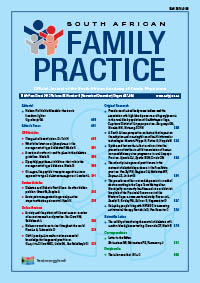What’s the latest on sulphonylureas in the management of type 2 diabetes?
Keywords:
sulphonylureas, glibenclamide, gliclazide, glipizide, glimepiride, chlorpropamide, type 2 diabetes
Abstract
Sulphonylureas act by binding to sulphonylurea receptors and stimulating insulin secretion from pancreatic beta cells. This class of oral hypoglycaemic agents is still widely used in the management of type 2 diabetes in patients where lifestyle changes alone are insufficient. Although the older-generation sulphonylureas no longer have a place in therapy, the newer-generation sulphonylureas are a widely recognised choice, either as monotherapy, or in combination with insulin and/or other oral hypoglycaemic agents.
Section
CPD
By submitting manuscripts to SAFP, authors of original articles are assigning copyright to the South African Academy of Family Physicians. Copyright of review articles are assigned to the Publisher, Medpharm Publications (Pty) Ltd, unless otherwise specified. Authors may use their own work after publication without written permission, provided they acknowledge the original source. Individuals and academic institutions may freely copy and distribute articles published in SAFP for educational and research purposes without obtaining permission.

